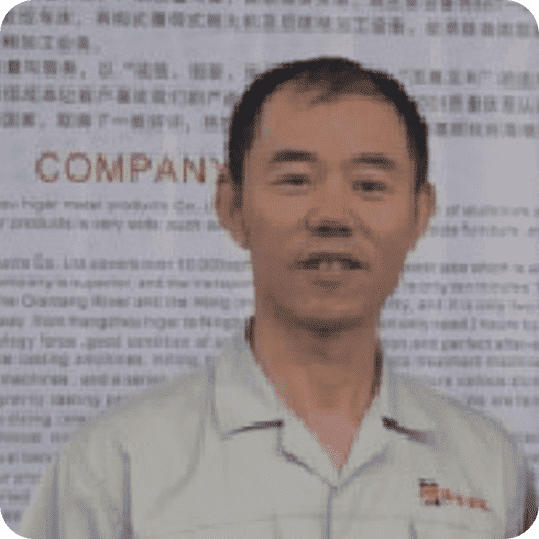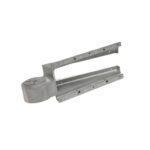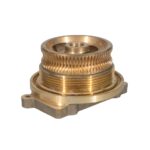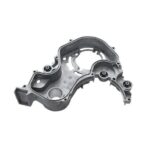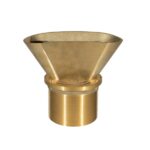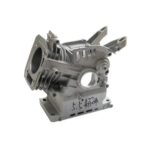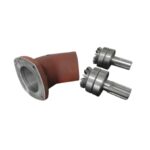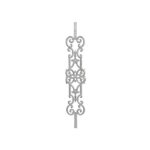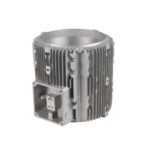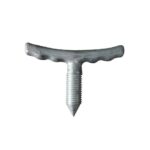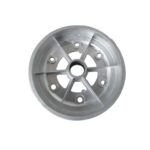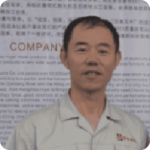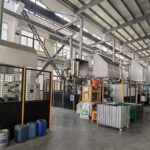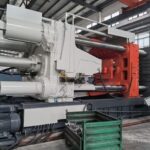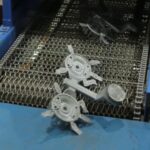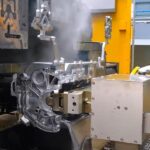This guide is written for beginners. We’ll explain what aluminum casting is, how the main processes work (with step-by-step instructions you can actually follow), what aluminum casting molds do, and how to pick between sand casting aluminum (aluminium sand casting), die casting aluminum process, permanent-mold (gravity die), investment, lost-foam, plaster/3D-printed sand, and squeeze/semi-solid routes.
Each method ends with a starter, real-world “how to” plan so you can move from idea to a manufacturable part.
What is aluminum casting and when do you use it?
Aluminum casting means pouring or injecting molten aluminum into a mold to create a near-net-shape part. You use cast aluminum when the geometry is too complex or too costly to make from sheet/plate, when you need thin ribs, bosses, and internal cavities, or when you want to reduce CNC time. Typical buyers: housings, brackets, lighting shells, appliance parts, trim, and small mechanisms.
What is the die casting aluminum process?
The die casting aluminum process (HPDC) injects aluminum at high speed/pressure into a steel mold. Because the metal fills fast and the die cools it quickly, you get thin walls (≈0.8–2.0 mm), tight repeatability, and short cycle times—ideal for high-volume, fine-detail parts. Aluminum die castings typically receive bead-blast + anodize/paint/powder; decorative chrome is uncommon on aluminum.
How the die casting aluminum process works step by step
Check that your part fits HPDC basics
- Target walls 0.8–2.0 mm (uniform), ribs ≈ 0.6× wall, boss base ≤ 1.2× wall.
- Add draft: 0.5–1° on external pulls, 1–2° on internal pockets.
- Blend with radii at all intersections (no knife edges).
- Choose an HPDC alloy
- Common: A380 / ADC12 (best fluidity/thin-wall), AlSi10Mg (clean machining, some variants support heat treat in non-HPDC routes).
- Define finish early (bead-blast + anodize/paint/powder). Decorative chrome is not typical for aluminum.
- Design the steel mold (die)
- Split the part with a clear parting line; place gates, overflows and vents so metal reaches last-to-fill areas and air can escape.
- Keep ejector pins off show faces; add pads/bosses where pins must land.
- Include cooling lines to control die temperature and reduce warpage.
- Set the process window
- Melt: typically 570–620 °C (per alloy and machine).
- Die temps: stable and balanced between halves.
- Shot profile: fast enough to avoid cold shuts; intensification pressure to pack metal and cut porosity.
- Inject, fill, and pack
- The shot sleeve pushes molten aluminum at high speed into the cavity (molding aluminum).
- Maintain pressure during solidification to minimize shrink porosity.
- Open, eject, and trim
- Ejectors push the casting out. Trim runners/overflows/flash; deburr edges.
- Prepare surfaces & finish
- Bead-blast to ~Ra 1.6–3.2 µm for a uniform look.
- Finish with anodize, powder coat, or paint as specified.
- CNC only critical datums/holes (keep machining short and localized).
- Inspect and document
- Dimensional check (CMM) on CTQs; leak/pressure test for sealed parts.
- X-ray/CT if agreed for porosity-critical regions.
- Keep a first-article/PPAP pack if your customer requires it.
When to choose it
Pick high-pressure die casting when you need:
- Thin walls (≈0.8–2.0 mm), fine detail, and repeatable cosmetics at medium–high volume.
- Tight as-cast accuracy (often ±0.05–0.10 mm per 100 mm) to reduce machining.
- Short cycle times and long tool life to hit piece-price targets.
Avoid HPDC if the part is very large/thick, needs structural heat-treat performance that HPDC alloys can’t deliver, or volumes are too low to justify a hard die.
Starter spec beginner-friendly
Use this as a safe starting point; we’ll tune numbers in DFM.
- Walls & features
- Walls: 0.8–2.0 mm (keep uniform; neighbor walls within ~30%).
- Ribs: 0.6× wall; add fillet ≥0.25× wall at rib bases.
- Boss base: ≤1.2× wall; use ribs instead of mass.
- Draft: 0.5–1° external, 1–2° internal; lettering depth/height ≥0.3 mm, stroke ≥0.4 mm.
- Min cored hole Ø: ≥1.2× wall; slot width ≥1.5× wall.
- Tolerances & finish
- As-cast linear: ±0.05–0.10 mm / 100 mm (tighter over short spans).
- Surface after blast: Ra 1.6–3.2 µm.
- Plan machining only on sealing pads, bearing bores, and key datums.
- Alloys (typical)
- A380 / ADC12 for best thin-wall castability and cost at volume.
- AlSi10Mg where cleaner machining or specific properties are desired (heat treatment usually for non-HPDC routes).
- Quality controls
- Vent/overflow cleanliness checks each shift; vacuum assist for deep pockets or high-cosmetic zones.
- CMM on CTQs; leak test for enclosures; X-ray on agreed AQL.
Tip: Before freezing the design, ask for a free DFM + press-tonnage estimate. We’ll place gates/vents, confirm draft/walls, and flag any porosity-risk zones so your first tool trial (T0) runs clean.
What is sand casting aluminum?
Sand casting aluminum is a process where you pack a pattern into sand to create a cavity, then pour molten aluminum by gravity to solidify into shape. The sand mold is inexpensive and easy to modify, so it’s great for large parts, prototypes, and low-to-medium volumes. Expect thicker walls (≥3–8 mm), looser tolerances, and a coarser surface that’s usually machined on critical faces.
How sand casting works step by step
- Make a pattern (wood, resin, or 3D-printed) with draft (2–3°) and machining stock where needed.
- Prepare molding sand (green sand or resin-bonded). Ram the pattern to form the cope (top) and drag (bottom).
- Add gating: cut a sprue (pouring channel), runners, and risers (feeders).
- Remove the pattern to leave a cavity. Dust with parting agent.
- Close the mold and clamp/weight it.
- Melt aluminum (e.g., AlSi10Mg or 356) in a crucible; degas (argon tablets) and skim dross.
- Pour by gravity at the recommended temperature, steady and continuous.
- Cool and shake-out (break the sand), cut risers, shot-blast, and CNC critical faces/holes.
- Inspect (dimensions, visual, sometimes X-ray for critical sections).
When to choose it
- Large parts, low tooling cost, fast changes.
- Coarser surface and looser tolerance are acceptable.
- UK searchers often use aluminium sand casting.
Starter spec (beginner-friendly)
- Wall ≥ 3–8 mm; draft 2–3°; fillets generous (≥ 3 mm).
- Target tolerance ≈ ±0.5–1.0 mm / 100 mm (machine critical faces).
- Typical alloys: 356/A356, AlSi10Mg.
What is permanent mold (gravity die) aluminum casting?
Permanent mold (gravity die) aluminum casting pours molten aluminum into a reusable metal mold under gravity (sometimes with a slight tilt). The metal mold cools the part faster than sand, so you get better surface finish, denser microstructure, and stronger properties than sand casting—without the high pressure and tool cost of HPDC. It fits medium volumes, 2.5–6 mm walls, and parts that benefit from T6 heat treatment.
Gravity-die step by step
- Design part for gravity fill: wall 2.5–6 mm, generous radii, consistent sections.
- Cut a metal mold (steel/iron) with thermal control and tilt/vent features.
- Preheat the die, coat with refractory wash.
- Melt & degas alloy (e.g., 356/A356).
- Pour by gravity or slight tilt, steady and laminar.
- Cool in die, open, de-gate, heat treat if specified (T6 common).
- Shot-blast, CNC datums, finish (anodize/paint).
- Inspect (dimensions, hardness after heat treat, leak if needed).
When to choose it
- Better mechanicals and surface than sand; medium volumes; tooling cost lower than HPDC.
Starter spec
- Wall 2.5–5 mm, draft 1–2°; tolerance ≈ ±0.2–0.5 mm / 100 mm.
- Alloys: 356/A356 (heat-treatable), AlSi10Mg.
What is aluminum investment casting/precision casting?
Aluminum investment casting (lost-wax/precision casting) builds a ceramic shell around wax patterns, burns the wax out, and pours aluminum into the shell. The ceramic captures fine details, delivering complex geometry, good surface finish, and decent tolerances with tooling that’s cheaper than HPDC molds. It shines for intricate parts, moderate volumes, and alloys like AlSi10Mg/356—often followed by T6 when higher strength and elongation are needed.
Investment (lost-wax) step by step
- Design with wall 1.5–3.5 mm and minimal heavy masses.
- Wax patterns injected into a die; assemble a cluster on a wax sprue.
- Build ceramic shell (dip & stucco cycles) to required thickness.
- Dewax to create the cavity; fire the shell.
- Melt & pour aluminum into hot shells; controlled atmosphere if required.
- Knock-out, cut, fettling (gate removal), blast, optional heat treat (e.g., AlSi10Mg-T6).
- CNC tight features; inspect (dimensions, NDT if critical).
When to choose it
- Very fine features, undercuts/slots, moderate volumes, good surface without the highest tool cost.
Starter spec
- Wall 2–4 mm (thinner possible with expert gating); tolerance ≈ ±0.2–0.4 mm / 100 mm.
- Alloys: AlSi10Mg, 356.
What is lost-foam aluminum casting?
Lost-foam aluminum casting uses a foam pattern that is embedded in sand and vaporizes when metal is poured, so the aluminum replaces the foam one-to-one. It enables highly integrated shapes that would otherwise need many cores or assemblies. The trade-offs: gas management is critical, surfaces are sand-like, and tolerances are looser than investment or HPDC.
Lost-foam step by step
- Machine/shape a foam pattern (EPS) to net shape with gating built-in.
- Coat foam with refractory slurry; embed in dry sand (unbonded).
- Vibrate to compact; apply vacuum (optional).
- Pour metal: foam evaporates, metal takes its place.
- Cool, knock-out, minimal fettling, blast/CNC.
- Inspect; porosity control via vacuum/venting.
When to choose it
- Highly integrated shapes, reduced assembly count, medium volumes, modest tooling.
Starter spec
- Wall 3–6 mm; tolerance ±0.5–0.8 mm / 100 mm; focus on gas management.
What are plaster molds and 3D-printed sand molds for aluminum?
Plaster molds and 3D-printed sand molds create the cavity directly from CAD without hard tooling. Plaster gives better detail than green sand; binder-jet 3D sand prints complex cores and thin walls fast. They’re ideal for prototypes and short runs where you need cast geometry this week, accepting that per-piece cost is higher and mechanical properties depend on the pour practice.
Plaster / 3D sand step by step
- Prepare CAD and split lines; add draft and machine stock.
- Print the mold (binder-jet 3D sand) or pour plaster around a master.
- Dry/bake to remove moisture; add simple cores if needed.
- Melt & pour; controlled preheat helps avoid misruns.
- Shake-out, clean, CNC, finish.
When to choose it
- Rapid prototypes and small batches; thin-wall sand without hard tooling.
Starter spec
- Wall 2–4 mm feasible; tolerance ≈ ±0.3–0.6 mm / 100 mm.
- Use AlSi10Mg/356; confirm shell strength and venting.
What is squeeze casting / semi-solid aluminum?
Squeeze casting applies high pressure during solidification in a metal mold, collapsing porosity and yielding near-forging density; semi-solid (thixo/rheo) injects a partly solid slurry to reduce turbulence and gas. Both routes produce very low porosity, strong, heat-treatable parts (e.g., A356/357-T6) suited to chassis/brackets where fatigue and strength matter—at the cost of more complex tooling and tighter process control.
Squeeze / semi-solid step by step
- Design for load (boss fillets, uniform sections).
- Preheat die, charge metal (or thixotropic slurry for semi-solid).
- Apply high pressure during solidification (squeeze) to collapse porosity.
- Open, de-gate, heat treat (often T6), CNC critical features.
- Inspect (mechanicals, porosity via X-ray).
When to choose it
- Need near-forging density and properties (chassis, brackets), moderate volumes, can accept higher tooling/process control.
Starter spec
- Wall 3–6 mm typical; very low porosity; excellent fatigue after T6.
- Alloys: A356, 357, AlSiMg families.
How do you choose an aluminum casting process?
Process Quick Selector Table
| Process | Tooling cost | Economic volume | Typical wall | Typical tolerance (per 100 mm) | Typical surface (Ra μm) | Mechanical properties |
|---|---|---|---|---|---|---|
| Sand casting | Low | 1–1,000 | 3–8 mm | ±0.5–1.0 | 6–12 | Medium |
| Permanent mold (gravity die) | Medium | 500–50,000 | 2.5–6 mm | ±0.2–0.5 | 3–6 | Medium–high |
| Investment casting | Medium | 50–10,000 | 2–4 mm | ±0.2–0.4 | 3–6 | Medium |
| Die casting (HPDC) | High | 5,000–500,000+ | 0.8–2.0 mm | ±0.05–0.10 | 1.6–3.2 | Medium |
| Lost foam | Low–Medium | 100–10,000 | 3–6 mm | ±0.5–0.8 | 6–10 | Medium |
| Plaster/3D-sand | Low–Medium | 1–500 | 2–4 mm | ±0.3–0.6 | 3–6 | Medium |
| Squeeze / semi-solid | High | 2,000–100,000 | 3–6 mm | ±0.1–0.3 | 1.6–3.2 | High (after T6) |
(Ranges are typical; your geometry may require exceptions.)
Which aluminum alloys are common in casting?
Alloy Quick Guide Table
| Alloy | Castability | Strength (as-cast) | Elongation | Heat treatable | Finish compatibility | Typical uses |
|---|---|---|---|---|---|---|
| A380 / ADC12 | Excellent | Med–High | 1–3% | No | Powder/paint, machining | HPDC housings, brackets |
| AlSi10Mg | Very good | Medium | 4–8% | Yes (T6) | Anodize/powder, machining | Investment/gravity, thin ribs |
| 356 / A356 | Good | Medium | 3–5% (T6 up to ~10%) | Yes (T6) | Anodize/powder, machining | Gravity/sand, structural |
| 357 | Good | High (T6) | 3–7% | Yes (T6) | Anodize, machining | Squeeze/semi-solid, chassis |
| 6061 (cast) | Fair/Poor | Medium | 6–12% (T6) | Yes | Excellent post-weld | Sand/gravity (limited), thick parts |
What tolerances and surface finishes are realistic?
Tolerance & surface by process Table
| Process | Linear tolerance (per 100 mm) | Draft (typical) | Surface after blast (Ra μm) |
|---|---|---|---|
| Die casting | ±0.05–0.10 mm | 0.5–1° ext / 1–2° int | 1.6–3.2 |
| Investment | ±0.20–0.40 mm | 0–1° | 3.2–6.3 |
| Permanent mold | ±0.20–0.50 mm | 1–2° | 3.2–6.3 |
| Sand casting | ±0.50–1.00 mm | 2–3° | 6.3–12.5 |
| Lost foam | ±0.50–0.80 mm | low | 6–10 |
| Plaster/3D-sand | ±0.30–0.60 mm | 1–2° | 3–6 |
Finishing pointers
- For anodizing, prefer AlSi10Mg/356/357 and bead-blast evenly.
- Powder coat hides minor flow lines and is robust outdoors.
- Polish only where needed; design cosmetic “show faces” and keep gates/ejectors off them.
How do you design aluminum casting molds?
DFM quick rules you can apply today
- Uniform walls (≤30% change between neighbors) to avoid sink/warpage.
- Ribs ≈ 0.6× wall with fillet ≥ 0.25× wall at base.
- Bosses base ≤ 1.2× wall; add ribs instead of mass.
- Draft: HPDC 0.5–1° ext / 1–2° int; sand 2–3°.
- Holes/slots: min cored hole Ø ≥ 1.2× wall; slot ≥ 1.5× wall.
- Lettering: height/depth ≥ 0.3 mm, stroke ≥ 0.4 mm.
- Radii: generous at all intersections to improve flow and fatigue life.
Tip: In HPDC, add overflows and vents sized for your projected area; consider vacuum assist on deep pockets to reduce gas porosity.
What defects matter in cast aluminum and how do you prevent them?
Defect → cause → practical fix Table
| Defect | Likely cause | Fast countermeasures |
|---|---|---|
| Porosity (gas/shrink) | Trapped air, uneven sections, low gate speed | Add vents/vacuum, balance runners, thicken isolated walls, localized machining stock |
| Cold shut / misrun | Metal front cools before meeting | Raise melt temp, shorten fill path, gate nearer, increase section |
| Hot tearing | Constrained contraction, sharp corners | Add radii, balance cooling, switch alloy with better hot-tear resistance |
| Flash | Die gap, over-pack, wear | Tune intensification, service parting line, check tie-bar balance |
| Soldering/die pickup | High temp, poor release, Fe loss | Adjust temps/lube, refresh melt chemistry |
FAQs
What is aluminum casting?
Forming parts by solidifying molten aluminum in a mold (sand, die, investment, etc.) to reduce machining and enable complex shapes.
What are aluminum casting molds called?
Die casting molds, permanent molds (gravity), investment shells, sand molds, lost-foam molds, plaster/3D-printed sand molds—each supports a different process.
How does the die casting aluminum process differ from sand casting?
Die casting injects metal into a steel mold for thin walls and tight tolerances; sand casting pours by gravity into sand for low tool cost and large parts but looser tolerance and rougher surface.
Is cast aluminum strong?
Yes—choose the right alloy and process. A356/357 with T6 in gravity/squeeze casting can reach high strength and good elongation. HPDC (A380/ADC12) delivers strong, thin-wall parts but is not typically heat-treated.
Need an Aluminum Die Casting Manufacturer?
Email your STEP + 2D, target alloy/finish, and EAU. We’ll return a DFM, press size, tooling plan, and a firm quote & lead time for production.

